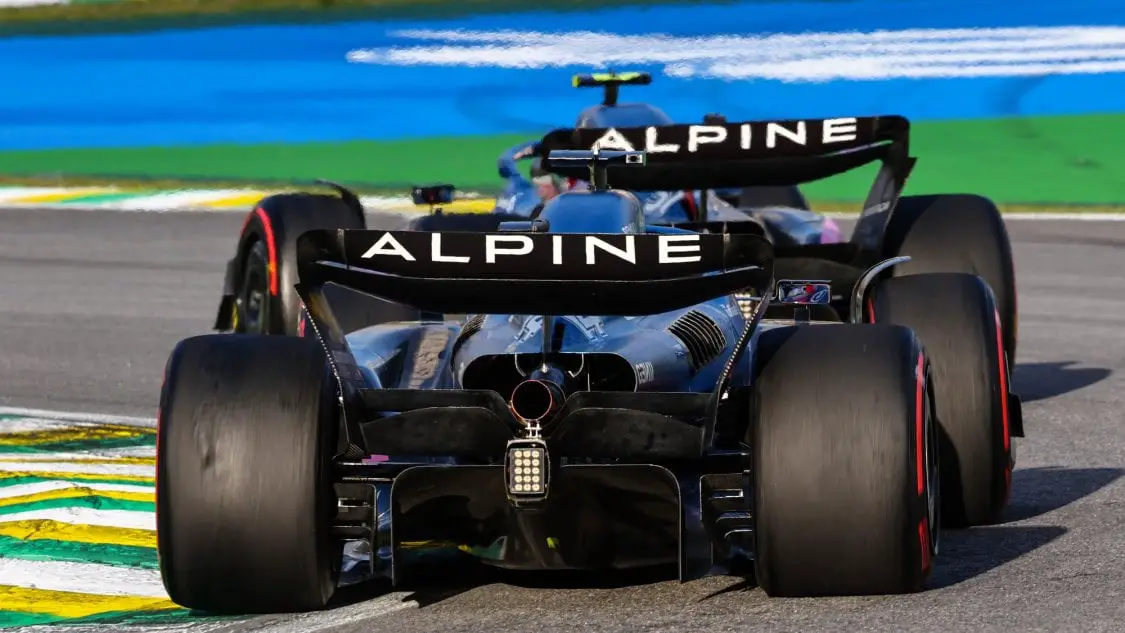Formula 1 is a sport where every millisecond counts, and teams constantly look for ways to improve their performance. One of the key aspects of F1 car design is aerodynamics. This is the science of how air flows around and interacts with the car’s bodywork and wings.
Teams spend millions of dollars to optimize car aerodynamics. One of the phenomena that aerodynamicists use is the Coanda effect. This is the tendency of air to remain attached to the surface it flows over, adapting to that solid and following its contour.
By manipulating this, teams can make the airflow follow the car’s shape and direct it to specific areas where they want to generate more downforce or reduce drag.
In this article, we explain the Coanda effect, how it works, and how it is used in F1 car design. We also look at one of the most prominent examples of this technique: the Coanda effect exhaust. It is a clever solution teams developed in 2012 after the FIA banned other methods of using exhaust gases to enhance aerodynamics.
What Is The Coanda Effect And How Does It Work?
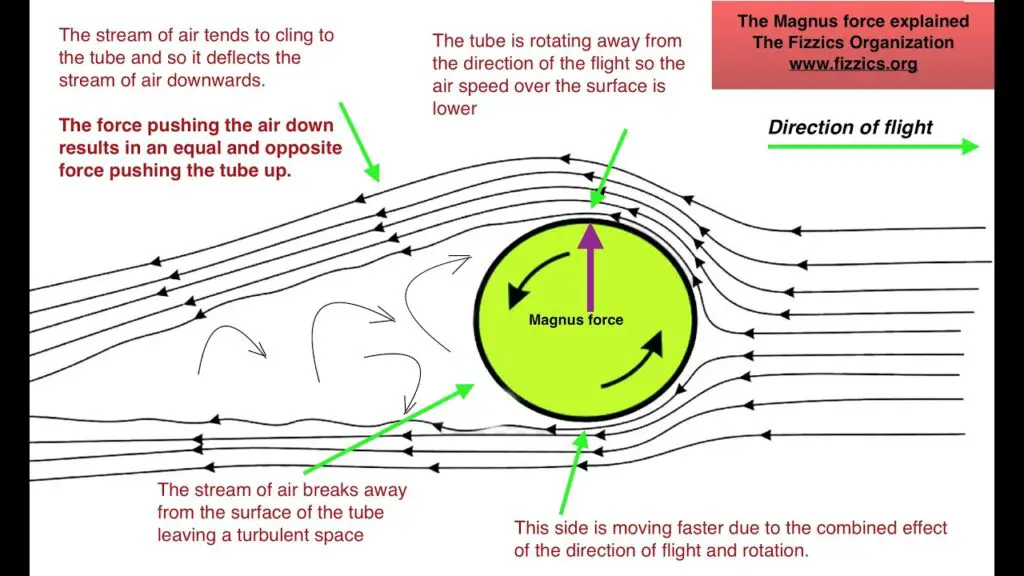
The Coanda effect was discovered by Henri Coandă, a Romanian inventor. He specialized in aerodynamics. Some claim he may have developed and flown the first jet aircraft.
He observed that a jet of fluid (such as air or water) can attach to a curved surface. It follows the surface around, creating a low-pressure region behind it. This low-pressure region acts as a suction force that pulls the fluid closer to the surface..
This creates a positive feedback loop that keeps the fluid attached to the surface as long as possible.
You can see the Coanda effect in action with a simple experiment using a spoon and a stream of water.
An Easy Experiment Shows The Coanda Effect In Action
Hold a spoon under a faucet and let the water hit the back of the spoon. You will see that the water will curve around the spoon and follow its shape.

Independent Research
This happens because the water “sticks” to the spoon due to its viscosity and creates a low-pressure region behind it. The water on the other side of the spoon has a higher pressure and pushes the water towards the spoon. This makes it bend even more.
The same principle applies to air flowing over a curved surface, such as an F1 car’s bodywork.
The air will try to follow the surface and create a low-pressure region behind it. The air on the other side of the surface has a higher pressure and pushes the air towards it.
The result is that it bends even more. This way, teams can control where they want the air to go and how they want it to behave.
A Guide To How The Coanda Effect Shapes F1 Car Design
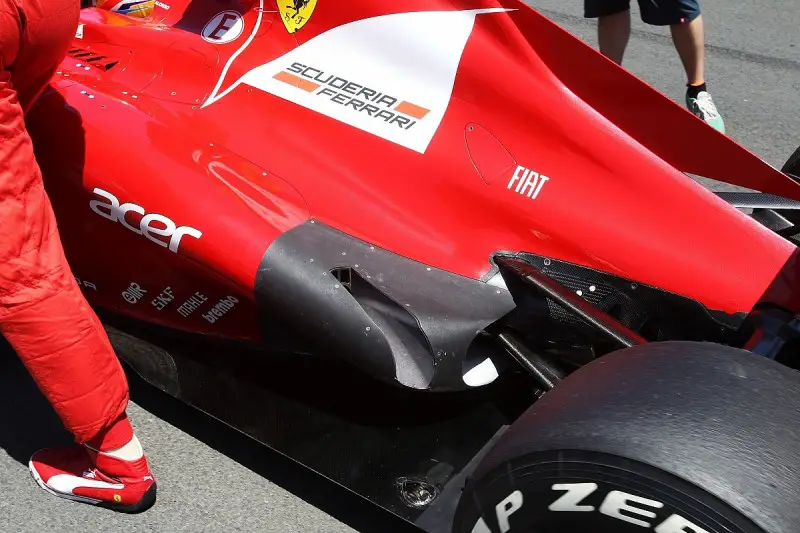
Designers use the Coanda effect in various ways in F1 car design. One of the most prominent examples was the Coanda effect exhaust.
This is a technique that teams developed in 2012 after the FIA banned other methods of using exhaust gases.
A blown diffuser was a device that used exhaust gases to energize the airflow under the car’s floor. It increased the car’s speed.
It created more downforce by lowering the pressure under the car, which sucked it closer to the ground. The FIA deemed the method too powerful and potentially dangerous. As a result, they imposed strict regulations on where and how teams could place their exhaust outlets.
The F1 Teams Used The Principal To Overcome The Ban On Blown Diffusers
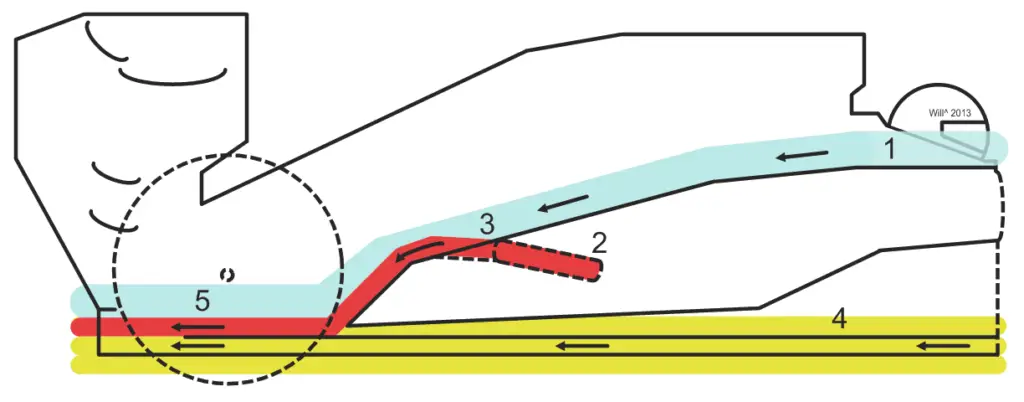
To find a way around the regulations, F1 teams came up with a clever solution. They designed surfaces that used the Coanda effect to make the exhaust gases follow the car’s bodywork and reach the diffuser area.
They placed the exhaust outlets on top of the side pods and bent them downwards. By doing this, a jet of hot air sticks to the curved surface of the sidepod and bends toward the car’s rear.
This enables them to use the exhaust gases to boost the diffuser’s performance and generate more downforce.
The exhaust is not as effective as the blown diffuse. Despite this, it still gave teams an advantage over those who did not use it.
It also had some drawbacks, which included the following.
- Increased drag
- Higher cooling demands
- Reduced engine power.
As is the norm, the FIA continued tightening the exhaust placement regulations. In 2014 they banned the Coanda effect exhaust.
How F1 Teams Use The Coanda Effect In 2023
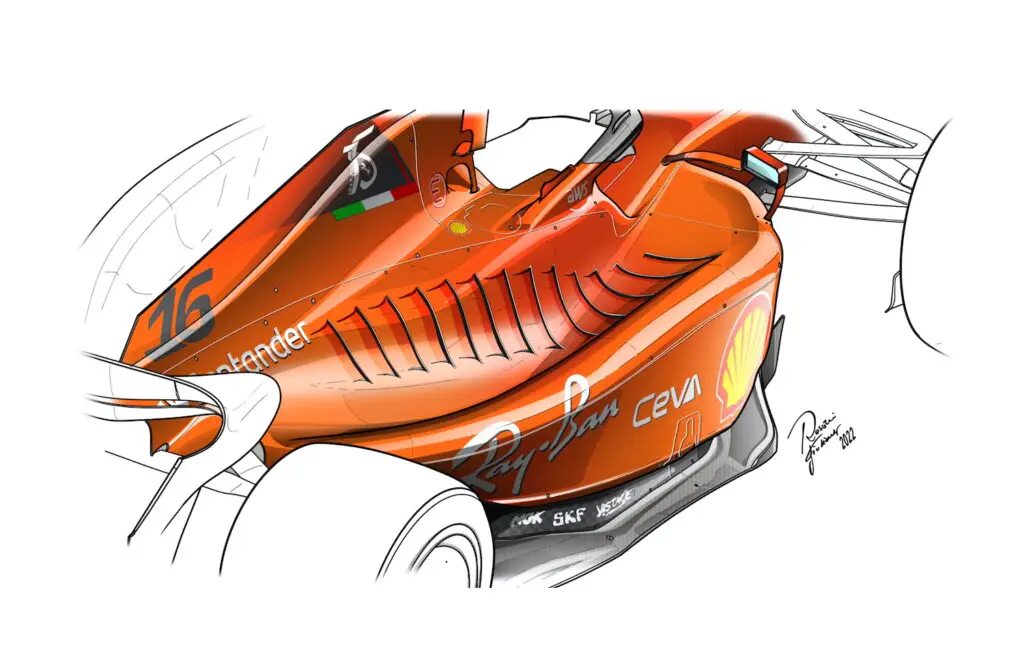
F1 teams use the Coanda effect by shaping the car’s bodywork and wings to make the airflow follow their contours and generate more downforce or reduce drag.
Modern day F1 car is designed from the ground up to ensure that air flows stays “stuck” to the car. It prevents the turbulence developing which increases drag and reduces top speed.
All of the aerodynamic features exploit the principal to ensure the airflow moves from the front to the back of the car as efficiently as possible.
This is the reason why F1 cars don’t have any straight surfaces. The Coanda effect increases the faster the car moves. As the speed increases the higher the energy the airflow has. This means that the impact of a surface that is designed to exploit The Coanda effect become more effective as speed increases.
Red Bull’s car has a unique design that used the design to create a vortex over the rear wing and increase efficiency.
It is still a relevant and important phenomenon in F1 car design, even after the ban on the Coanda effect exhaust.
Conclusion
The Coanda effect is a phenomenon that describes how a fluid jet can follow a curved surface and create a low-pressure region behind it. The Coanda effect is used in various applications, such as aircraft design, ventilation systems, and fire sprinklers.
In F1, teams use the Coanda effect to manipulate the airflow around and under the car and generate more downforce or reduce drag.
If you want to learn more about F1 aerodynamics and other technical aspects of the sport, you can check out our other articles on our website.
Thank you for reading, and stay tuned for more F1 content!

